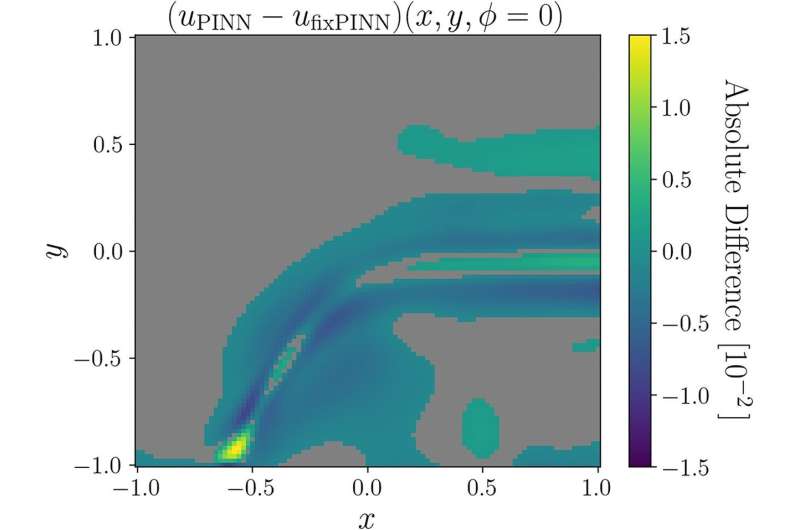This article has been reviewed according to Science X's editorial process and policies. Editors have highlighted the following attributes while ensuring the content's credibility:
fact-checked
peer-reviewed publication
proofread
AI shines a new light on exoplanets

Researchers from LMU, the ORIGINS Excellence Cluster, the Max Planck Institute for Extraterrestrial Physics (MPE), and the ORIGINS Data Science Lab (ODSL) have made an important breakthrough in the analysis of exoplanet atmospheres.
Using physics-informed neural networks (PINNs), they have managed to model the complex light scattering in the atmospheres of exoplanets with greater precision than has previously been possible.
This method opens up new opportunities for the analysis of exoplanet atmospheres, especially with regard to the influence of clouds, and could significantly improve our understanding of these distant worlds.
The work is published in the Monthly Notices of the Royal Astronomical Society.
When distant exoplanets pass in front of their star, they block a small portion of the starlight, while an even smaller portion penetrates the planetary atmosphere. This interaction leads to variations in the light spectrum, which mirror the properties of the atmosphere such as chemical composition, temperature, and cloud cover.
To be able to analyze these measured spectra, however, scientists require models that are capable of calculating millions of synthetic spectra in a short time. Only by subsequently comparing the calculated spectra with the measured ones do we obtain information about the atmospheric composition of the observed exoplanets.
And what is more, the highly detailed new observations coming from the James Webb Space Telescope (JWST) necessitate equally detailed and complex atmospheric models.
Rapid solving of complex equations thanks to AI
A key aspect of exoplanet research is the light scattering in the atmosphere, particularly the scattering off clouds. Previous models were unable to satisfactorily capture this scattering, which led to inaccuracies in the spectral analysis.
Physics-informed neural networks offer a decisive advantage here, as they are capable of efficiently solving complex equations. In the just-published study, the researchers trained two such networks. The first model, which was developed without taking light scattering into account, demonstrated impressive accuracy with relative errors of mostly under 1%.
The second model incorporated approximations of so-called Rayleigh scattering—the same effect that makes the sky seem blue on Earth. Although these approximations require further improvement, the neural network was able to solve the complex equation, which represents an important advance.
Interdisciplinary collaboration
These new findings were possible thanks to a unique interdisciplinary collaboration between physicists from LMU Munich, the ORIGINS Excellence Cluster, the Max Planck Institute for Extraterrestrial Physics (MPE) and the ORIGINS Data Science Lab (ODSL), which is specialized in the development of new AI-based methods in physics.
"This synergy not only advances exoplanet research, but also opens up new horizons for the development of AI-based methods in physics," explains lead author of the study David Dahlbüdding from LMU.
"We want to further expand our interdisciplinary collaboration in the future to simulate the scattering of light off clouds with greater precision and thus make full use of the potential of neural networks."
More information: David Dahlbüdding et al, Approximating Rayleigh scattering in exoplanetary atmospheres using physics-informed neural networks, Monthly Notices of the Royal Astronomical Society (2024). DOI: 10.1093/mnras/stae1872
Journal information: Monthly Notices of the Royal Astronomical Society
Provided by Exzellenzcluster Origins




















